Maximising Connection During Maternity Leave
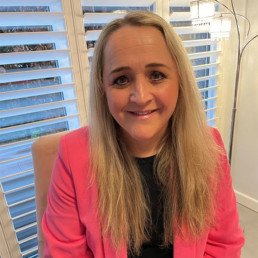
Written by Liz Cartledge
Senior Vice Principal at a large Secondary School in Sheffield. Leader of Inclusion, Behaviour and Designated Safeguarding Lead. Liz is the mother to twin girls and returned from maternity leave in September 2020.
As a leader, the constant care of students and staff is arguably the most important and biggest responsibility in the long list of daily tasks. Getting the balance right and knowing what to do in each unique case can be hard.
It is true that we learn through our mistakes, however, sometimes it is helpful to be able to reach for some real-life guidance. Sometimes the hardest of experiences can make us the strongest. I personally experienced a lonely and isolating maternity leave due to the COVID-19 pandemic and lockdown in 2020 and thus feel I can offer some useful insights and support to schools who want to ensure their staff on maternity leave are cared for.
Since returning to work, I have often been asked to support other newly pregnant staff and on occasion those off with long-term absence. I feel empowered to help staff and one key reason I cite for this is because I feel confident sharing my own personal struggles and vulnerabilities, which I encountered on the journey to motherhood. Through Nourished Collective who featured a series called Mother, Sister, Daughter, Woman (Copy of This is How We Look (mcusercontent.com)), I shared my story which has helped me to break the silence that can exist around this issue. This has helped me personally and professionally to become a stronger leader.
The key is to build a school where staff feel valued, heard, and listened to. Sharing my story has given me the drive to know I can provide others with the space and empathy they need. It doesn’t matter what the issue is, if we, as leaders, are open about our emotions it can mean we are relatable to others; so I urge you to be vulnerable and see the benefits from it.
Recently, I have been considering the support we provide our staff with whilst on maternity leave. During my maternity leave I experienced reduced support, no baby groups and limited access to a GP. Maternity leave can be incredibly lonely and isolating. Connection is therefore key, and schools can provide this.
Within any school there is an abundance of knowledge and talent. Schools can offer emotional sanctuary and security. New parents/carers should be encouraged to share photos and updates regularly with a key member of staff. Furthermore, if you have a few members of the team off at once, could a group (perhaps via WhatsApp or equivalent) be set-up pulling all together?
I am often asked to be the key person identified to talk to new or soon to be new parents/carers. Currently, I am in regular contact with new Mums on maternity leave to provide them with a close connection with school. This helps us keep in touch and is a lifeline on some days for those Mums. I know this having cared for twin babies during a pandemic!
Do you offer this 1:1 support for those on maternity leave? Do staff have the chance to have 1:1 chats with a named ‘go to’ person on SLT? Could this help morale and well-being at your school if you make these subtle changes?
What kind and frequency of contact do you have with those on maternity leave? They are, after all, still employed by the school doing what is arguably the most important job of their lives. We owe it to them.
Remember, as leaders we can make a huge difference. Simple acts of kindness go a long way, sending cards or flowers can help bridge the gap that can grow when on leave. Creating a sense of family first is vital for staff retention.
Occasionally, without bridging this gap, we can risk staff being anxious to return or not returning at all.
Another key step to helping staff on maternity leave is to give them knowledge. By making them aware of the policy, for example what KIT (Keeping in Touch) days is a great start. It should not just exist in a policy given to staff to read. This could become part of pre-recorded videos shared with staff or information passed on in a 1:1 meeting before they leave. The impact of doing this is that it helps staff to be empowered and feel supported at this important time.
When staff do return, make sure they have the chance to meet a key person they feel comfortable with and that well-being chats are regularly put in. A review meeting 6 months or sooner after returning is a must to help the member of staff feel supported and to be able to reflect on how they are coping with work alongside parenthood.
Remember, it takes time for the member of staff to adjust to work. Schools move at a fast pace, and we must be patient. Small steps are acceptable. Don’t be too hard on yourself if you are returning and don’t expect too much if you have someone returning, at first- be flexible! Personally, it took me 12+ months to be myself again at work. Letting staff know this is great for their self-confidence and self-esteem which can be very low with sleep deprivation!
Celebrating the return of staff from maternity leave is important to share with all staff in briefings, in newsletters with parents/carers and with governors. It helps everyone see the member of staff returning as a new person which I feel is supportive and celebratory of their achievement/s!
The more we share, the greater the understanding will be for all and the greater the potential for empathy can begin.
The Need for Equity in Education for Those Trying to Conceive
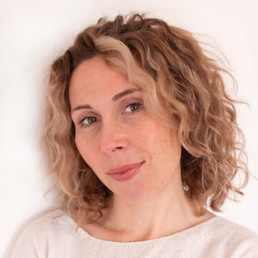
Written by Caroline Biddle
Consultant, fertility coach and fertility advocate. Founder of Fertility Issues in Teaching.
The journey to parenthood isn’t always straightforward, with assisted conception being a route for many couples and individuals.
1 in 6 people in the UK are infertile, and in the last 10 years there has been an increase in women in same sex relationships looking to assisted conception for support to grow their families, as well a significant rise in those deciding to head down the route of fertility treatment to become a solo parent.
Female employees need time out of work to access fertility treatment
Male infertility accounts for 50% of infertility, nevertheless it’s women who require the time out of work to attend clinic appointments for scans and surgery.
The Teachers’ Fertility Treatment Survey is the first ever survey of its kind, gathering data from female teachers (including those who have left education) that have accessed assisted conception in the past 10 years. Data collected from the survey will provide an accurate insight of what is happening in schools in England and Wales as we unearth:
- How career progression of these women has been affected
- The percentage of schools that have fertility policies in place
- The impact of the support and the lack of support on female staff accessing assisted conception
- The wellbeing of staff members receiving fertility treatment
Employees can be surprised to learn that assisted conception in most school HR policies is referred to as ‘elective treatment’, meaning they find themselves compared with someone who wishes to have a breast enhancement during term time.
Categorising fertility treatment as elective is outdated.
The word ‘elective’ implies that fertility treatment is a lifestyle choice. This is discriminative terminology towards those with the disease of infertility and also to those in same sex relationships and who need assisted conception to have a biological child, or women who require treatment to become a solo parent for reasons such as having no partner, or having recently come out of a long term relationship.
Why we need assisted conception policies in the workplace
We need assisted conception policies in every workplace. In schools this policy will ensure that all teachers who are trying to conceive, no matter what their circumstance, are included, protected and supported.
Thousands of teachers are leaving the teaching profession every year, due to burn out or a change in personal circumstance. Some of these teachers leave education due to a dip in ambition following a lack of support following fertility treatment.
How to make policy inclusive and equitable for all employees
When writing your fertility workplace policy consider the following to avoid discrimination:
- Use non-gender specific language
- Allow partners (or those supporting someone who has no partner) to attend all fertility appointments.
- Be cautious not to discriminate against relationship status
- Be mindful of the sexual orientation of colleagues when writing a workplace fertility policy
- Be inclusive of the ages of those opting into assisted conception
- Avoid putting a limit on time off per cycle, everyone will need a different amount of time dependent on their personal circumstances—no two fertility journeys are the same
Life beyond the policy
A workplace fertility policy is a great starting point for schools wishing to be supportive of their staff who’re trying to conceive. There is however still work to be done from here.
To find out about the work Fertility Issues in Teaching offer, you can get in touch through the website, where you’ll also find helpful blog posts and information around free upcoming webinars.
The Journey To Overcoming Timidity
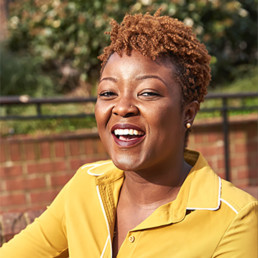
Written by Ayo Awotona
Ayo Awotona specializes in confidence building for girls in education. She does this through programs, workshops, and keynote speeches.
“For the timid, change is frightening; for the comfortable, change is threatening; but for the confident, change is opportunity.” – Nido Qubein
Being human, we tend to adopt certain qualities that do more harm than good. One of those qualities is timidity. So, let’s take a look at how we can overcome being timid as a leader in education a.k.a servant leader.
What is timidity?
It is defined as showing a lack of courage or confidence. To clarify, there is nothing wrong with having moments of not feeling confident or courageous but it becomes a hindrance when we take on a persona of a timid person, especially as servant leaders.
What can cause timidity?
There are many causes of timidity; for example, an unhealthy relationship between the SLT, constraints around teams (thoughts, behaviours, and styles), process (reporting, hierarchy, and steps), and technology (tools, applications, and systems), fear of transparency or a combination of these things.
Ultimately, a helpful way to overcome timidity is first learning what the root cause is. Sometimes we get caught up with the symptoms instead of dealing with the underlying issue. Just like when we are ill, rather than focusing solely on the symptoms, we try and find the cause of the illness and treat it.
Introspection is really beneficial to not only pinpoint the symptoms but also discover what causes our own timidity. From there, we can decide what the next step is to effectively deal with it.
The consequences of timidity
A major reason why we need to tackle timidity is that it can cripple us from being the best servant leaders we can be.
Below is a list of examples of how timidity can negatively affect us:
- Second-guessing oneself
- Overthinking
- Silencing our voice
- Too hesitant or too rash in actions and words
- People-pleasing
- Constant worrying
- Stressed out
How can we triumph over timidity?
It is better to look at overcoming timidity like a journey instead of a race. It includes mental training and learning to make decisions from a place of confidence than fear.
Self-reflection helps in having a better understanding of ourselves and our feelings. It would be very useful to ask ourselves in our personal time; “what makes me timid?”, “what could I gain by looking through life from a lens of confidence”, “what could I lose by looking through the lens of timidity?” and other questions similar to this.
When we find our answers, hold on to them! We need them in times of stressful and difficult scenarios i.e. change resistance, keeping everything time-boxed, and dealing with distributed teams. So when our timidity arises, we understand why we feel the way we do and will (hopefully) have an effective plan on how to tackle it.
Essentially, we all have to go through our own personal growth so we can be amazing servant leaders otherwise we miss out on being the greatest we could be. So, let’s take action against timidity and start (or continue) our journey to overcome!
What it means to be a diverse educator
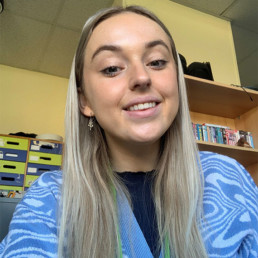
Written by Chloe Roberts
Chloe is an English trainee from Hampshire. She is currently completing her training with BASCITT.
Teaching for diversity refers to acknowledging and celebrating a range of differences in and out of the classroom. Being an inclusive practitioner who embraces difference allows transformations in the way we think, teach, learn and act. This is vital in ensuring all students feel celebrated in their learning environment. Although we have come a long way in recognising and celebrating diversity, we still have a long way to go. It is not a case of acknowledging that you are already ‘inclusive’, it is about educating yourself on key aspects of your students’ lives and the dynamics of society. This is something that I will continue in my practice as I embark on my journey to becoming an English teacher. I am quite fortunate that in my subject I can use a variety of resources within the classroom that celebrate a vast amount of different people and cultures, however, this is more limited in KS4 due to the GCSE specifications. Understandably there are more limits in other subjects but having more of an awareness of what you could do is vital. So going forward, what can you do to increase your own knowledge and understanding on diversity?
DiverseEd:
This site is a hub of resources and knowledge on diversity and inclusion. Hannah Wilson has created a space where a variety of practitioners can come together and share thoughts and research. In addition, events and seminars are organised regularly to support teachers and equip them with a breadth of knowledge.
I attended an online conference with Diverse Ed and the range of topics discussed were extremely informative. Hearing from a diverse number of practitioners gave me lots to think about in terms of my own practice. Inspiring teachers to be activists and encouraging a diverse number of people into the profession is a way to make waves in the education community. Jo Brassington, who discussed their own experience in the classroom as a non-binary teacher, claims that ‘to make change we need to be seen in the room’. I absolutely agree with this, as a member of the LGBTQ+ community I have always struggled with being open about my identity with others. Discussions like these have encouraged me to ‘be seen in the room’ and embrace my own differences, which some of my students can relate to. I am no way implying you must ‘come out’ to students if you do not feel comfortable, but having some transparency about your own lived experience can create a safe space for others to.
The whole morning was incredibly thought provoking and gave me a lot to think about in my own practice. Fortunately, there are recordings of the conference on Diverse Ed alongside lots of blog posts which can inform your teaching. (see below in further resources for website).
Seminars:
Over the past year I have attended a variety of seminars relating to diversity in education. All of which I have found on Eventbrite. I find this website incredibly useful for a range of different forms of CPD. It is accessible and the majority of seminars are free to access. This is another way to increase your knowledge on a variety of different topics, including diversity within education.
A recent seminar I attended was on ‘Recovering Black Storytelling in Qualitative Research’. This covered how we can encourage our students to use their narrative voice alongside a discussion on Stephanie Toliver’s new book, which is being released. She discussed the literary devices she used in her novel and the origins behind them, which was really interesting. The thought process behind a writer’s writing is always incredibly fascinating! This was a celebration of black culture along with discussions that can translate into the classroom. Although curriculums are becoming more diverse, I have found there is still a lack of celebration when it comes to people of colour; the negative connotations that are presented in literature through the texts we have historically studied are not changing. Why are we continuing to study outdated ideologies? I am not discrediting the fact that it is important to have an understanding of such things, but to prioritise information presented by white cisgendered men, does limit our understanding and knowledge of other cultures.
Overall, seminars are brilliant and can really inform your practice. Eventbrite has such a range from something subject specific or general CPD for teachers. I recommended having a look around the site and searching for seminars that spark your interest.
What can you do in school?
I think a good place to start is speaking to colleagues and gauge an understanding of what your school already does. In my previous school, I knew that there used to be an LGBTQ+ and ally group during lunch times. I then decided to reinvent the club and bring it back. I wanted to create a space where anyone could come and discuss their experiences and learn about the LGBTQ+ community. I was really pleased with the turnout and the maturity all students displayed when discussing their experiences. It was great to hear their ideas and what the school could do to ensure they were being more inclusive.
Speak to your departments and see what you can bring into the curriculum. Again, as an English teacher I am fortunate to be able to bring in a range of different texts that students can learn from; however, tutor time is an excellent way to go into more detail and have discussions with students regarding diversity and what it means to them. Obviously PSHE is an excellent way to integrate these topics but get to know what your students are learning in PSHE and relate that into lessons. In addition, during LGBTQ+ History month and Black History month, there are a range of one off lessons that you can use in school which celebrate and educate those on diversity. Please don’t limit yourself to using these resources during their celebratory months, there are so many amazing things we can learn from a variety of lived experiences.
Here below are a range of resources that I have found really useful in my learning journey:
Books:
- How to transform your school into an LGBT+ friendly place by Anna Carlile and Elly Barnes
- Celebrating difference: A whole school approach to LGBT+ inclusion by Shaun Dellenty
- From Ace to Ze: The little book of LGBT terms by Harriet Dyer
- The Emperor Has No Clothes: Teaching about Race and Racism to People Who Don’t Want to Know By Tema Jon Okun
- So You Want to Talk about Race By Ijeoma Oluo
- White Fragility By Robin D’Angelou
- Why I’m No Longer Talking to White People about Race By Renni Eddo-Lodge
- Memoirs of a Black Englishman By Paul Stephenson
- White Privilege By Kalwant Bhopal
- Not Light but Fire: How to Lead Meaningful Race Conversations in the Classroom by Matthew R. Kay
- Facilitating Conversations about Race in the Classroom by Danielle Stewart, Martha Caldwwell, and Dietra Hawkins (comes out in March)
- Knowing How To Discuss Race In The Classroom: A Guide For White Teachers On How To Develop and Understand Racial Literacy by Ashlee A. Jeannot
- A Little Guide for Teachers: Diversity in Schools by Bennie Kara
Websites:
- Stonewall: LGBTQ-inclusive education: everything you need to know (stonewall.org.uk)
- Youth.gov: Schools | Youth.gov
- Breakout Youth Basingstoke: About Breakout Youth: LGBTQ+ Hampshire-based Charity
- Diverse Ed: https://www.diverseeducators.co.uk/
- Black Men Teach: https://blackmenteachtc.org/
- Preparing for Cultural Diversity: Resources for Teachers: https://www.edutopia.org/blog/preparing-cultural-diversity-resources-teachers
- Resources for Educators: https://equaliteach.co.uk/education/classroom-resources/
People to follow on Twitter:
Here are some of the things I have thought about when increasing my knowledge on diversity. It is a journey and it is important to ask yourself difficult questions and reflect on what you can do within the classroom. As teachers we can all be activists and create an environment where all of our students feel heard and validated.
Whose Potential is it Anyway?

Written by Ellie Garraway
Chief Executive of Grit Breakthrough Programmes, a youth charity that delivers personal development and coaching programmes in schools, colleges and universities across the UK.
The odds are that, when you look at the website or mission statement of a youth charity, school, college or university, or when you come across articles, blogs and posts about young people and education, you’ll see the word potential. For those of us who work with young people it is vital that we ‘support young people to fulfil their potential’ and yet it’s a word that has become so much of a cliché we’ve forgotten what it really means.
I like this early definition of it: ‘That which is possible, anything that may be’. And at Grit we see that come alive in the course room. The young people recognise that their belief that ‘I’m a nobody’ (for example) is not, actually, a fact. They come to see there are so many more empowering ways of interpreting themselves and their lives. It is a lightbulb moment that can transform young people’s futures and is a privilege to witness.
The Latin root is: potencia ‘power, might, force’. When we become liberated from the limitations of the past and understand the power we have within ourselves, we can make things happen in our lives that previously we believed were beyond our control. “Before Grit I never felt able to challenge a professional on how they were reacting to an incident or dispute, or how they were being with a particular student. It was almost as if I was letting them dictate how I did my job. Now I’m able to hold them to account.”
THIS is what gets me out of bed in the mornings.
But recently it has occurred to me that there is a darker, oppressive, almost tyrannical side to potential.
Over the last two years in particular most of us have been comparing our life under Covid with what our ‘best life’ is supposed to look like. But it’s not just the pandemic. The culture of self-improvement can create the assumption that no matter what life throws at you, you can still choose to be ‘happy.’ These expectations can leave us feeling that the imperative to ‘fulfil our potential’ is a pretty large stick to beat ourselves with.
This is certainly what our young people are telling us. It’s bad enough that they’ve had to experience the anxiety, trauma, disruption of living through the pandemic. But they are also having to live with the narrative of ‘catch up’: the ‘wasted years,’ ‘the cohort with fake grades,’ ‘the ones who’ve fallen behind.’ In some ways this narrative is as damaging (if not more) than the experience itself. When we think about potential as another way of talking about the gap between our current reality and the way we think it should look, it can be paralysing.
In his book ‘Groundedness’ Brad Stulberg talks about the notion of ‘heroic individualism’. This is the idea that only by giving everything to our work, our sport, our latest endeavour, our every waking moment and leaving ourselves empty, can we truly know that we’ve reached our potential.
But actually, this can create a really unhealthy approach to life, one where we constantly need to feel that the level of challenge is as high as possible. Here, ‘Fulfilling potential’ is not about being slow, thoughtful, restful, still, ordinary – quite the opposite. It becomes accepting this as a generic cultural norm about what potential looks like and judging ourselves against it: ‘I should get A grades’, ‘have a huge list of enriching activities on my CV’, ‘get a graduate-level job’ (whatever that means). Only if I appear impressive to others can I truly believe that I’ve really nailed this potential thing.
But what happened to allowing our own life to unfold before us like the unravelling of a great mystery? What happens when the way we measure ourselves is based on what feels right and true, rather than what will most impress others? Isn’t this what potential is all about?
So, while so many of us in the charity sector are driven by our passion for giving young people the opportunity to fulfil their potential – perhaps it’s time to really challenge whose notion of potential we have bought into – for young people and for ourselves.
Potential may well be ‘power, might and force’ but like any form of power it’s how you use it that counts. Let’s give that power to young people so they can reclaim their potential, decide what it means for them. After all, whose potential is it anyway?
Is your DEI team an unhealthy microcosm of your school or organisation? How you can journey through and learn from the process, in order to inform your future practice.
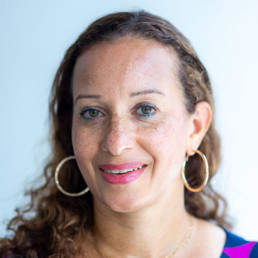
Written by Caroline Davis
Caroline Lucy Davis, International English Teacher & Diversity, Equity and Inclusion Advocate with a particular interest in the intersection of gender and race.
This article, which was presented at the AIELOC (Association of International Educators and Leaders of Colour) online conference 2019, discusses my experience of working on DEI initiatives where there was evidence of clearly inauthentic and tokenistic practice to achieve certain targets and tick box exercises. My journey is one of discovery to disruption to learning and exiting one educational organisation’s version of cultural relations and DEI work.
I became a member of my organisations DEI team and discovered a fractured, non-communicative, barely functioning group receiving very little guidance. If I examine my reasons for seeking out the team at the time I did, it is really quite simple and why others may do the same. I was struggling with certain issues surrounding gender in particular and I wanted an outlet. I would later learn that I was certainly not alone in my experiences. My experiences also resurfaced my long-term interest in social issues and experiences of marginalisation. I found the lack of initiative and direction of the DEI team very infuriating and was keen to move things forward.
So I found other ways to impact DEI initiatives through external volunteering opportunities sometimes connected to the organisation. I joined local and expatriate women’s groups, ran International Women’s Day events and was involved in a Global Race and Culture Working group. I networked internationally and it was this extending of my circle which was very enlightening and liberating for me. After quite some time of learning and leading more these initiatives, as well as feeling frustrated by the lack of movement on issues, I became lead for the DEI team. Excited, I threw myself into my new shiny (unpaid!) role in an area that I felt passionately about.
I researched and thought carefully about how I would establish a representative team and one that would work on the areas of EDI that mattered most, and were most pressing to the staff. My team was going to be functional and effective! I read about how to have inclusive meetings and communication, as I had been long-term recipient of the opposite at the organisation. I had become used to hearing the same old dominant voices and seeing the same old faces…those faces that were all so similar to one another.
Working conditions did not make communication, meetings, organising events or initiatives easy, and then there were the office and organisational politics. Despite the challenges and we had some successful, if with less attendance than hoped, events and initiatives.
At the same time, the idea of a microcosm became apparent to me when discussing issues even within the EDI team. We just did not seem to have the same understanding or experience of things. Could the EDI team, as representative of the wider organisation, be part of the problem? I indeed found clearly inauthentic and tokenistic practice to achieve certain targets and tick box exercises and even found my work accredited to someone else.
After delivering a presentation on racism in the UK and the lack of people of colour at senior leadership in the organisation, a manager approached me to say they had never noticed any racism and that was why they were so proud to work for the organisation. It was alarming that evidence can be so clearly under one’s nose, but remain unseen. Do we need to see racist acts to figure out that racism must be at play if there are no people of colour at senior leadership levels?
Clearly DEI teams can be unhealthy microcosms of wider organisations, just as classrooms, offices, schools, organisations can be unhealthy microcosms of wider society. So how do we journey through and learn from the process to inform future practice.
In my experience, the learning is the work and it is as rich, as it is exhausting. Keep a record of what you learn and how you learnt it. Seek out opportunities and reach out to the wider network. Stretch your microcosm bubble, perhaps you can burst it! By expanding my network and volunteering, I came to understand that there is a bigger world out there and people who see what you see, and want to make a genuine difference. I learned a great deal and despite the apparent silence, I believe I did disrupt things. I had felt invested and at the same time captive there and in the end decided that it was best for me to exit that educational organisation’s very outdated version of cultural relations and DEI work. This is how to journey through, learn from the process in order to inform your future practice.
Anti-bullying beyond Anti-Bullying Week

Written by Hannah Glossop
Head of Safeguarding at Judicium Education. Previously a Designated Safeguarding Lead and Assistant Head, Hannah now leads audits and delivers training to support schools with all aspects of their safeguarding.
2021 was yet another year where we saw a raft of deeply worrying examples of bullying. Research from the Anti-Bullying Alliance highlights that bullying continues to play a big part in young people’s lives: “Data we collected from pupil questionnaires completed between September 2020 and March 2021 also showed that one in five (21%) pupils in England report being bullied a lot or always.” High profile cases such as the institutional racism within the cricket world show that bullying in relation to our nine protected characteristics is a problem that goes far beyond schools.
Anti-Bullying Week 2021 brought with it a range of wonderful resources, tweets and articles in relation to anti-bullying back in November. As we march through the academic year, it is essential that we do not lose momentum and that we pay particular attention to tackling any bullying related to protected characteristics. So how can you do this?
1.Involve your pupils.
Consider an anonymous survey of your pupils, asking how many have witnessed bullying at school. This will give you a much clearer picture of how much is going on at your school and which groups are particularly targeted. Show students that you are taking bullying seriously and involve them in the policy decisions. Create a version of the bullying policy that is accessible for younger pupils.
2.Embed a culture of vigilance.
Empower both staff and students to act when they see or hear bullying taking place, either in person or online. Review the ways in which bullying is reported at your school-will all staff know how to progress bullying disclosures? Do students recognise that many nasty remarks may violate the Equality Act? Do students have a way to report bullying which avoids them having to speak face-to-face to a member of staff? Promote your anti-bullying work around the school, share it online and tell parents and carers. If pupils know you are taking it seriously, they are more likely to report it.
3.Identify hotspots.
Identify any particular areas in school, times of the day or online platforms where bullying seems to be taking place more frequently. Where possible, increase supervision in worrying areas or at problematic times of the day. If much of your reported bullying is taking place online, use external resources such as your Safer Schools Officer to explain when online abuse crosses a line and becomes illegal activity-for example hate crime and blackmail.
4.Curriculum.
Educate young people around the protected characteristics, what the Equality Act means and what impact this Act has on everyday life. Ofsted have recently updated their guidance on ‘Inspecting teaching of the protected characteristics in schools,’ noting that “No matter what type of school they attend, it is important that all children gain an understanding of the world they are growing up in, and learn how to live alongside, and show respect for, a diverse range of people.” In addition, the Proposed changes to Keeping Children Safe in Education 2022 include a new section on schools’ obligations under the Equality Act 2020, adding schools, “should carefully consider how they are supporting their pupils and students with regard to particular protected characteristics – including sex, sexual orientation, gender reassignment and race.”
5.Record and review.
Paragraph 78 of the Ofsted’s School Inspection Handbook lists the “Information that schools must provide by 8am on the day of inspection” and includes:
- “Records and analysis of bullying, discriminatory and prejudiced behaviour, either directly or indirectly, including racist, sexist, disability and homophobic/biphobic/transphobic bullying, use of derogatory language and racist incidents.”
Rather than seeing this as a mere Ofsted “tick box” exercise, use these records to fully explore which forms of bullying are happening within and around your school. Ensure that each reported bullying instance is recorded, using your behaviour management or safeguarding reporting mechanisms. Investigate any trends in these reports, share these with governors and senior leaders and take meaningful action to address these. For example, if disability-related bullying is becoming prevalent, think about what resources are needed to both educate children and show them that this form of abuse will not be tolerated.
Over the coming months ahead of the next annual Anti-Bullying Week, bear the above in mind and remember that embedding some of these ideas could make many of your students feel much less segregated from school life and much more likely to thrive.
The Power of the Community

Written by Dena Eden
English teacher and writer based in Norfolk. MA in Educational Research and currently working as an English Standards Leader.
I signed up to the recent #DiverseEd conference knowing I would hear about some brilliant examples of Diversity, Equity and Inclusion work going on across education; I didn’t expect to finish the conference feeling empowered. Listening to authentic voices and lived experiences encouraged me to reflect on my own, and has given me the confidence I needed to forge ahead with necessary change.
As a cis white person I recognise my privilege. As a woman, I have experienced the frustration of my ideas not being taken seriously until a man repeats them. My choice on how to present physically also means people have undermined my intelligence and assume I enjoy shopping and ‘partying’ – they were someone’s actual words. They are surprised when I share my achievements and professional life before teaching. They are even more surprised when they find out I’m gay. Ironically, the part of my identity which is a ‘protected characteristic’ has been met with more positive outcomes than negative. When people ‘find out’ I am gay, women treat me more warmly and men take me more seriously. But that’s a whole other blog post.
I want to share my own experience to try and explain the effect the #DiverseEd conference had on me: despite being invested in creating a truly inclusive environment for a long time, I didn’t feel ‘diverse’ enough to be the person to do that – but at the same time also felt a huge pressure from being part of the LGBTQ+ community to be a voice for those who don’t speak up. Growing up in Birmingham and then living and working in both Mexico and the USA means that I have experience of living life in the role of the ‘other’ – but also that I have always worked in environments rich in diversity. Embarking upon a career in education in a significantly less diverse area of the UK was a shock to me.
Despite absolutely loving where I live and work for lots of reasons, it does continue to surprise me when I witness the problematic attitudes and language used when talking about diversity and inclusion. Discriminatory language is used without understanding why it is a problem and the pervasive idea that ‘real’ prejudice is overt and/or violent means many people do not recognise their privilege: Prejudice hides behind ignorance; tokenism acts as acceptance; tolerance is sufficient.
Understanding inaction: providing solutions not problems.
My experiences have frustrated me and as a result, I approached leadership in the Trust I currently work for to start a conversation; it was met with enthusiasm and support and has led to me setting up an Inclusive Communities group working with outstanding colleagues invested in making long lasting change.
Up until the #DiverseEd conference, I had some idea of what I wanted us to do – but have been apprehensive. For me, a truly inclusive environment has always been about addressing the root of the issue – people’s mindsets. Until people are willing to admit both their own privilege and the importance of the work that needs to be done, nothing will change.
Watching the conference helped me to reflect on previous conversations and helped me to understand that I had been too concerned with losing respect or upsetting others by voicing how crucial the work around diversity, equity and inclusion really is. But without action, we are conversationalists not activists; my thinking has now shifted from worrying about reactions to focusing on my own actions.
Before the conference, I felt like the battle was in trying to get people to appreciate the importance and immediacy of the work that needs to be done – it isn’t work with immediate measurable outcomes for example. After watching the conference, I feel validated in arguing that there should be no such battle. The immediacy and importance of this work is not an opinion – it is a fact.
So moving forward, rather than focusing on whether the changes can be made, I am focusing on how they will be made. Working with an incredible community and calling on the expertise of my colleagues, we are going to approach people with solutions rather than problems. This is where we are going to start:
- Looking at policy within schools and across the whole Trust.
- Educating our staff to be able to challenge one another and our young people – this will be led by training from authentic voices sharing their lived experiences.
- Recognising multiple stakeholders in this work: parents, governors and HR should be included in our approach to EDI.
- Working with our incredible curriculum team to explore ways we can include balanced and meaningful representation into our existing work.
It was overwhelming to think about the work that needed to be done; now I’m excited to get started. We deserve genuine support, not allowances; to be comfortable as well as safe; celebration, not tolerance.
“You never get a second chance to make a first impression.”
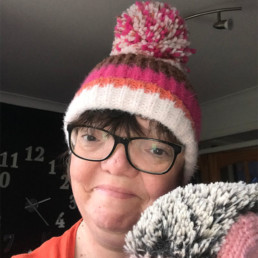
Written by Corinna Richards
An avid crocheter, who also happens to teach, train and lead.
“You never get a second chance to make a first impression.”
— Andrew Grant.
Whether Oscar Wilde or Will Rogers said it first, isn’t for this purpose particularly important. What any student or teacher with a facial disfigurement will tell you, is that it’s true. And the experience of that is hugely important. It’s always been true, but in our “beauty bias” society, looking different – whatever that difference may be, is a big deal. Having a facial or ‘visible difference’ can be excruciating. Our physical appearance matters in first impressions. I’m not saying it should, but from my experience it does.
I blog about this from two perspectives. Firstly, as a person with a congenital facial disfigurement who works in Education and secondly as an EdD student. I’ve just turned 50, and “back in the day” plastic surgery wasn’t as developed as it is now. I had my first plastic, corrective surgery at the age of 11, so I spent my primary school years looking very different. My skull fused together in the womb prematurely which caused my eyes to be extremely wide set and for my nose to be virtually flat with two small nostrils. You can imagine…
However, like everyone, I’ve adapted, over-compensated and fought my way back. I always wanted to teach and that’s what I’ve always done. Apart from three terms in suburbia I’ve always taught in inner city London and only once did I have any issues regarding my face from a pupil. I loved and still do, the diversity of the inner-city, the children were remarkably accepting of my appearance, we were all shapes and sizes together, the issue of ‘normal’ just never seemed too prevalent. The same couldn’t be said for the parents! The suspicion of my appearance was always there, in some heated exchanges a name regarding my appearance would slip out (yawn… I’ve never heard that one before…) and I’ve even had some parents ask my secretary what is wrong with my face! (One of the many reasons I prefer children to adults!)
But last year, I had a bit of a shock.
I am in the third of year of EdD at UEL and I am studying the lived experience of Imposter Phenomenon in Teacher Educators. It’s really interesting, but it wasn’t my first choice. Initially, I wanted to study IP in teachers with visible differences. I couldn’t find any. I didn’t know any. I didn’t know any teachers with facial burns, or severe acne, or disfiguring birthmarks or craniosynostosis… statistically they must exist (I am for one)… but where are they? I then thought about all the pupils I have taught over nearly 30 years… lots of differences, but when did I teach a child who was like me? I don’t think I have. Where are these children and where are the teachers?
Recently, in an updated version of Malory Towers, a young actor, Beth Bradfield, with a visible difference joined the cast, but how often do we see actors with facial burns or scars? Possibly in James Bond, but then of course, only as the villain. I attended my first DEI event last weekend, it was brilliant. Representation matters. Yes, it does. So how do I help other people like me have the courage to stand in front of groups of people and teach. I spent decades of my life trying to hide my face. I was desperate to make my visible difference invisible. It seems like I might not be the only one.
For more information visit:
‘Changing Faces’:
The Katie Piper Foundation: www.katiepiperfoundation.org.uk
Headlines:
Geography: Righting the world?
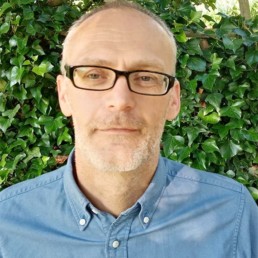
Written by Steve Brace
Head of Education and Outdoor Learning at the Royal Geographical Society. He started his career as a geography teacher and had previously led the education programmes for ActionAid and the Commonwealth Institute.
Studying geography enables young people to better understand the world’s people, places and environments, the interactions between them – from the local to the global scale.
As Ofsted notes, this requires teachers to critically reflect on the imagery, data and attitudes they portray to pupils, so that geography can accurately represents the nature of the world’s people, communities, economies, diversities and experiences (Ofsted 2021). And, as our world continues to change so must geography. This makes the subject such a fascinating and challenging one to teach and why geography has an important role in supporting equality, diversity and inclusion (EDI).
Geography has one of the best gender balances of all subjects and over the last 10 years its GCSE cohort has become much more diverse. Since 2010 its GCSE entries have increased by over 50% reaching a record high of 282,000 candidates last summer. It is welcome that this growth has come predominantly from those groups who were previously less likely to study geography: Black, Asia and minority ethnic pupils; pupils with lower prior attainment; those from low-income backgrounds; and/or pupils studying in comprehensive schools (RGS 2020)
However, the positive change at GCSE is not yet being seen at A Level and the narrowing of intake continues further at university. This is despite the positive outcomes that geography provides for its graduates, who experience above average rates of graduate employment and ‘top 10’ graduate salaries.
It is recognised by the colleagues across the subject community that more work is needed to better support EDI in relation to the curriculum, resources, the teaching workforce and how the subject can support young peoples’ career aspirations. Examples of current activities include:
- Puttick and Murrey’s research (2020) which identified that the ‘piecemeal approach to geographies of race and racism is insufficient for educating students for the 21stC’
- The scholarship shared through the RGS’s Decolonising geographical knowledges conference
- The Higher Education community’s support for accessible and inclusive fieldwork and pride in the field
- The advocacy and work of Black Geographers
- And teacher led initiatives such as Decolonising Geography , Inspirational Geographers and – alongside many others – that of Shiv Das, Hina Robinson and Hafsa Bobat
There are also opportunities to reduce the gap between geographical research and the classroom, such as through the RGS’s Ask the Geographer podcast which share the work of research geographer with teacher and their pupils. Schemes-of-work can also be updated through the incorporation of new research findings, such as the resources based on the Migrants on the Margins research programme which investigated the lives of migrants in Colombo, Dhaka, Harare and Hargeisa. Such resources are further complemented by the wider contributions of many others including Worldmapper, Gapminder and Dollar Street.
Consideration needs also to be given to not only to what is being taught, but also who is teaching geography. This situation is explored in I didn’t have any teachers that looked like me which shares the perspectives of Black, Asian and minority ethnic trainee and early career geography teachers. And they recommend the need for EDI to be held as a responsibility for all geography teachers, as well as the wider subject community and its institutions.
Geographers can also critically reflect on the subject’s development through Britain’s period of Empire and imperialism, how the subject helped create and share stereotypical views about the world and the continuing legacy of these. For example, the very first volume of the Proceedings of the Royal Geographical Society (1857) an author ascribes the Moroccan town of Sala’s decline to “ignorance, despotism and Mohammedanism”. However, dissenting voices – including those of African descent – can be found in geography’s history, such as the 19thC testimony of James Africanus Horton of Sierra Leone and Edward Blyden of Liberia. Both were critics of Eurocentric stereotyping of African cultures and provide an early precursor to Chimamanda Adichie’s warning of a single story. Now in the 21stC there an imperative to rediscover geography’s diverse voices some of which can be seen in the RGS’s Hidden Histories of Exploration which highlighting the important contributions of African, Asian and Inuit people
As the geographer Professor Chris Philo recently said – geography invites both ‘earth-writing’ – words to evoke worlds, and ‘earth-righting’ – actions to improve worlds. For this to be achieved geography needs to become more equal, diverse and inclusive. Many within the subject have been setting a course to help achieve this, though this journey has still significant distance to travel.

